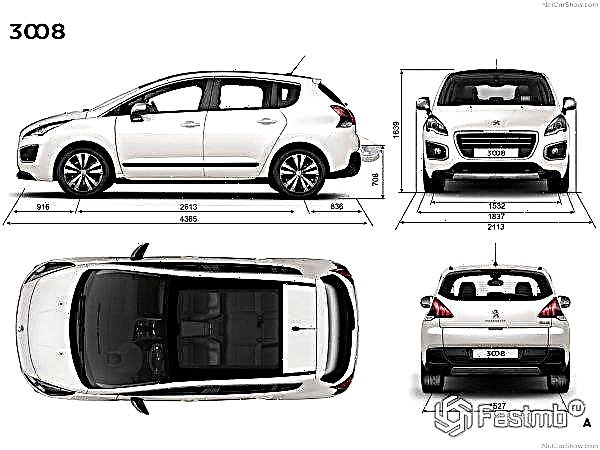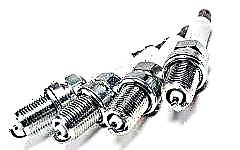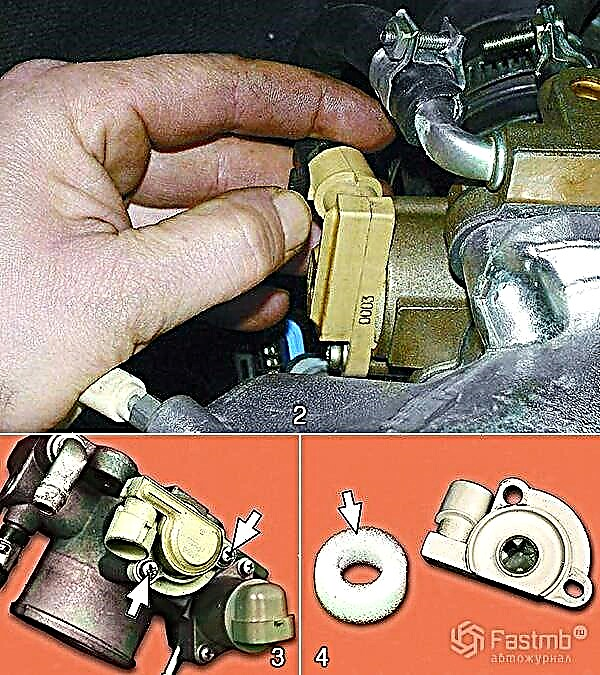
The content of the article:
- Causes of motor overheating
- Varieties
- External and internal overheating of the engine
- Signs of motor overheating
- Prevention measures
Overheating of a car engine is a rather big nuisance that can happen to your "iron friend". As a rule, overheating in the last stage is fraught with engine breakdown, and this is both time spent on repairs and a lot of money.
Causes of motor overheating

So what happens to the engine when it overheats? Why does it eventually deteriorate?
The thing is that any part of the motor is very sensitive to temperature changes, especially to an increase in temperature. First of all, the high temperature negatively affects the valve stem seals, and then it gets to the piston rings - and this is not good.
Everyone knows that when heated, any metal objects begin to expand, and when cooled, they return to their original state. If the engine parts heat up within normal limits, nothing bad happens. But when the engine starts to overheat, its parts from the high temperature expand so much that they acquire dimensions that exceed the design standard.
The result of such overheating, as a rule, is deplorable - the parts that have increased in size no longer return to their original dimensions, and from this the block head and the piston system are deformed.
There can be no one reason for overheating of a car engine. However, the driver needs to be aware that the engine can overheat both outside and inside. Internal overheating is worse in all respects, including because it is difficult to determine.
As a result of such overheating, the engine power decreases, there is a possibility of glow ignition, as well as ignition detonation, and characteristic damage in the form of notorious scoring may appear on the surface of the pistons.
Varieties of motor overheating

Overheating of the motor should be considered in the first, second and third degrees. The degree of engine malfunctions also depends on these types of overheating. For example, if the duration of the engine was in an overheated state for no more than ten minutes, then such overheating of the motor is considered overheating of the first degree... It is unlikely to cause serious trouble - in the most extreme case, the pistons can melt. But, if, under this condition, you find puffs of smoke arising from under the hood, then you should not risk it and it is better to send the car for inspection to specialists.
About the second degree of overheating you can speak with the duration of overheating for twenty minutes. The negative results of overheating here will be more serious: deformation of the cylinder head (cylinder head), the appearance of splits inside the cylinders, which can displace the valve seat. In addition, a sign of the second degree of overheating can be punched gaskets of the block head, oil seals that have ceased to hold oil, broken partitions between the rings and a host of other problems.
Overheating third degree Is a disaster for a car, comparable to a heart attack for a person. As a result of severe overheating, a chain reaction of malfunctions arises that does not spare the heart of the machine. Starting from the combustion chambers, a high degree of overheating removes almost all the components of the engine from working condition.
In this state, the engine is not able to work fully, because the surfaces of the pistons begin to burn out. In addition, the molten aluminum adheres to the inner surface of the cylinders, causing the pistons to brake.
At high temperatures, the oil loses its lubrication function, as a result of which the rubbing parts break and stop working. The molten connecting rod and main bearings burn to the crankshaft, and under the pressure of the piston, it falls apart in two. And at the end of the catastrophe, the piston breaks the wall of the cylinder block, after which the engine ceases to exist.
External and internal overheating of the engine

The main reasons leading to external overheating:
- The coolant has dropped below the permissible level. This circumstance can cause external overheating. The coolant is able to pass through the smallest openings, causing slugs under the machine. Worse, if it gets into the oil and into the cylinders, it can jam the crankshaft.
- Incorrect thermostat operation. This malfunction occurs mainly due to blocking of such a property of the movable element as elasticity. The reason is the accumulation of precipitation in the cooling system. When the thermostat malfunctions, the cooler starts to go in a small circle, that is, to work in the engine warming up mode when the cooling mode is required. Therefore, overheating is inevitable here.
- Insufficient air cooling of the generator. The cause may be contamination of the fins of the generator, as well as malfunctioning of the fan. If the fan is powered by electricity, it is necessary to revise the temperature sensor. And if the generator gets rotation from the crankshaft, it is worth inspecting the belt tension and, if necessary, tighten it with a special tensioner.
- Long periods of operation of the motor under abnormal loads, for example, in towing conditions, may cause external overheating. But even under the condition of idling, the motor may overheat during prolonged operation. This happens if the engine is running, but the car does not move, for example, in traffic jams. In such conditions, there is no counter movement of air masses, and for the necessary cooling, the action of one fan is not enough.
- Long engine operation during detonation. This can only happen with gasoline engines. This is a rather dangerous mode, which, in addition to overheating, can cause a large number of malfunctions.
- Unadjusted ignition and fuel supply can also cause external engine overheating. This happens in this way: the next portion of the fuel has not yet burned out, and the valves are already releasing the exhaust gases. But the temperature of these gases becomes critical, which causes the head of the block to heat up. The cooler starts to boil.
- Exhaust valve burnt out. Gases begin to see through the place of burnout. Having the highest possible temperature, they in turn increase the temperature of the motor.
There are three main reasons for internal overheating:
- The combustion chamber is dirty. This problem is very common in vehicles with excessive mileage. If the engine is used for too long, it will begin to absorb more oil, which is not highly flammable. As a result, it is not completely burnt, leaving corresponding deposits in the chamber. The smoke from the muffler is gray, but the temperature sensor does not work. As a result, the engine overheats. By the way, this kind of oil deposits are especially undesirable for cars running on gasoline, because they provoke glow ignition, which can be either late or early.
- Saline sediments from water and antifreeze, which remain in the cooling paths. Sometimes, such deposits can block a large part of the channel diameter to some extent, resulting in a significant reduction in coolant flow. This also overheats the engine.
- Sometimes, in order to improve the quality of the oil, motorists add so-called additives to it. Not all, but some of them can deposit on the inner surface of the cylinders in the form of a cermet layer. This layer is a powerful heat insulator, due to which the engine can overheat.
Signs of engine overheating

Formally, it is believed that the driver learns about an overheated engine thanks to a special sensor. However, in reality, observing the sensor while driving is not only difficult, but also dangerous. This means that the driver often either does not notice the sensor readings at all, or notices it too late.
Therefore, it is better for every car enthusiast to know the natural signs that the engine is overheated. Knowing about these signs, you can not be distracted from driving. So…
- During the cold season, the heating system stops the supply of warm air. This is an external symptom, and the reason is a drop in the volume of the coolant. It is important to know that hot air stops flowing just before the cooler boils.
- The appearance of signs of detonation. At the same time, experienced drivers distinguish a specific knock in the engine, which indicates excessive heating of the coolant. Detonation itself occurs when the combustion mode of the combustible mixture is violated. This is due to the large temperature jump on the walls of the combustion chamber.
- Intermittent knocking and severe drops in engine power also indicate that the engine is overheating. In this case, at a minimum, you need to stop and allow the engine to cool down. Otherwise, the consequences can guarantee expensive and long-term car repairs.
- If you suspect overheating, you need to stop moving and inspect the block head. If visual cracks or other types of damage are found on it, overheating is obvious.
How to prevent overheating of the motor

There are several rules that the driver can follow to protect the engine from overheating. First of all, it is necessary to systematically monitor the coolant level. If a drop in level is detected, add coolant to the normal range. Otherwise, serious problems can arise.
The thermostat should be monitored periodically. In principle, this is not difficult - it is determined by touch. To do this, just touch the radiator with your hand. A chilled thermostat is a sure sign of inoperability. Here you can do your own diagnostics.
Remove the thermostat and immerse it in water. Then heat the water to 80 degrees Celsius. When the water heats up to the set temperature, the valve should respond. If this does not happen, the thermostat must be replaced with a new one.
It is sometimes necessary to revise the passage channels. They should be free of holes, cracks or other damage. The narrowing of these channels is fraught with a violation of the high-quality heat removal from the motor surface. It should also be borne in mind that even the most microscopic holes in the coolant channels can cause coolant leakage.
For cooling, do not use hard water - it contains a lot of mineral salts. For these purposes, it is safer to use antifreeze or distilled water, which is ideally soft. In addition to it, rainwater can be soft. Sea or ground water are typical examples of hard water.
At least occasionally, it is worth checking the sealing of the cooling system, the upper part of it first. Air should not get there, otherwise the pressure will drop, which will lead to a decrease in the pressure of the fluid circulation.
Fan operation must not be ignored. As a result of its damage and stopping, the motor will begin to overheat with all the previously mentioned consequences.
Now you know how your car's engine can overheat, how to identify this trouble, and what precautions should be taken. Follow these simple rules, and happy journey!











